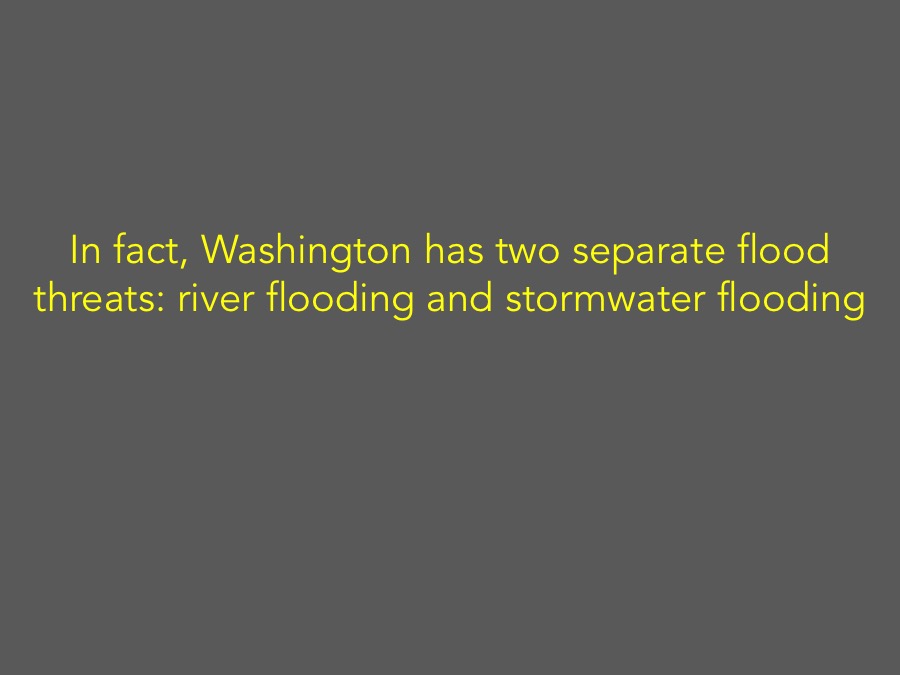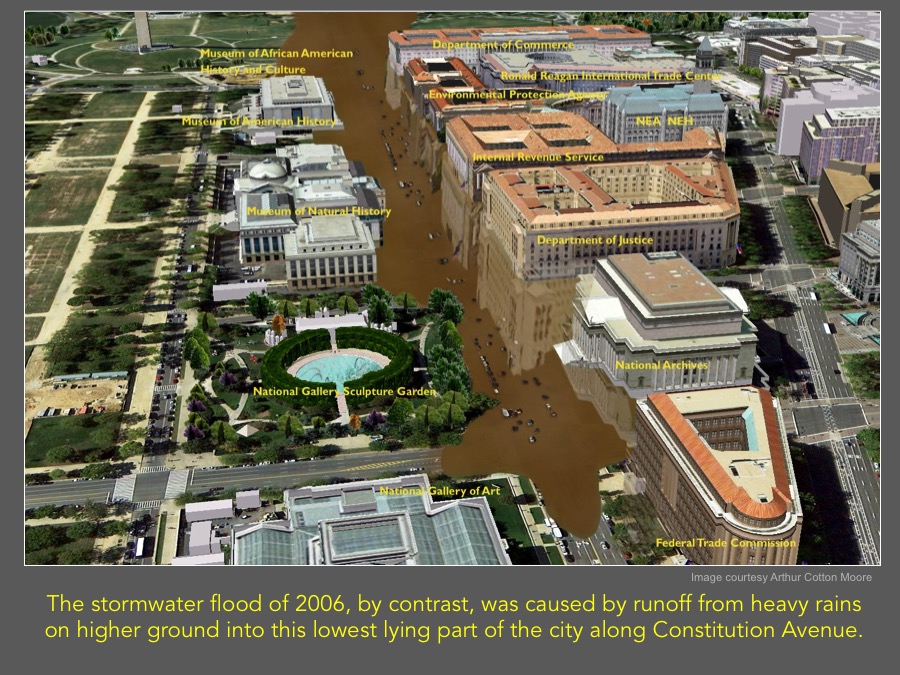In this hour-long webinar, the National Mall Coalition will present a unique approach to resiliency on the National Mall, one of the country’s most important public spaces affected by flooding. This event is part of Architecture Month 2020: Civic Spirit, a citywide celebration of the buildings and spaces that shape the capital, hosted by the Washington Chapter of the American Institute of Architects.
The resiliency concept is a multi-purpose underground facility called the National Mall Underground that acts as a stormwater reservoir, tour bus parking facility, and geothermal energy project.
[Visit the dedicated National Mall Underground website here.]
Federal and District flood experts have been seeking a comprehensive solution to Mall area flooding since the flood of June 2006. That disaster, following three days of heavy rain, inundated Mall museums and public buildings along Constitution Avenue.

The parking garage and geothermal components of the Underground provide solutions to other urgent needs, including clean energy for nearby public buildings and parking for tour buses that are now major sources of traffic congestion and air pollution.
During the webinar, exhibits presented will include photographs of historic Mall floods, maps illustrating the geography of flooding on the Mall, and recent reports raising new alarms about the scale of the flood threat to the public buildings and open spaces of the Mall. Speakers will include Arthur Cotton Moore, architect of the Underground, and Judy Scott Feldman, chair of the Coalition.
Time: 5:00 to 6:00 pm
Place: Online only
Price: Free
Register: AIA registration form (general public as well as students and AIA members invited)
or register directly at this link.














